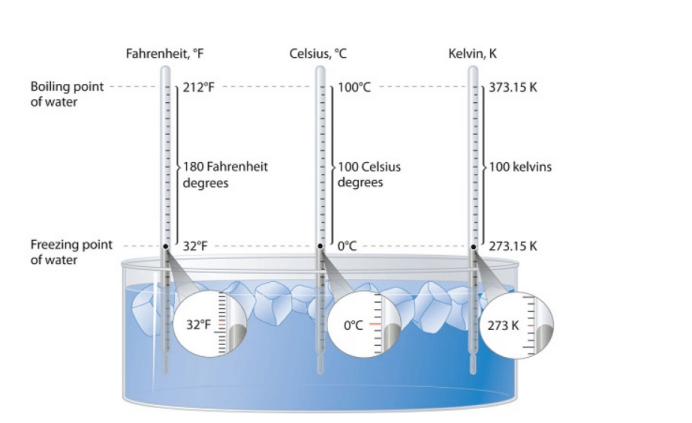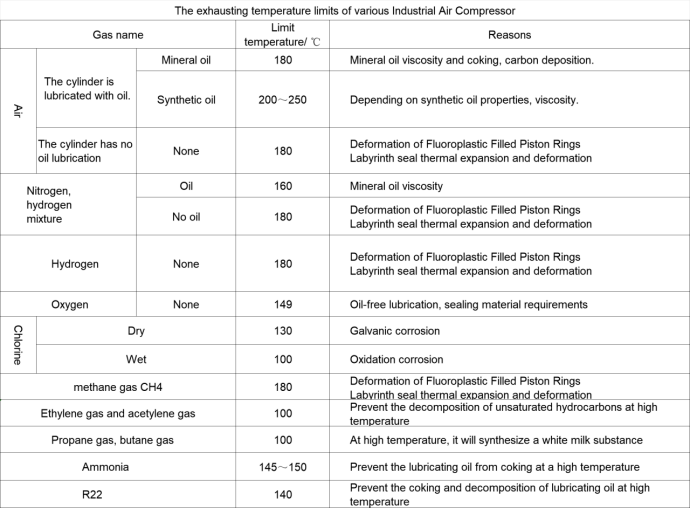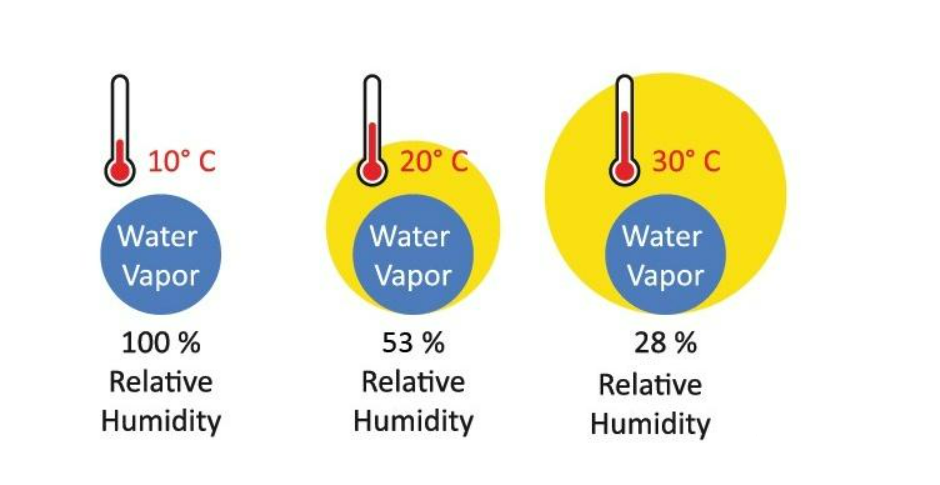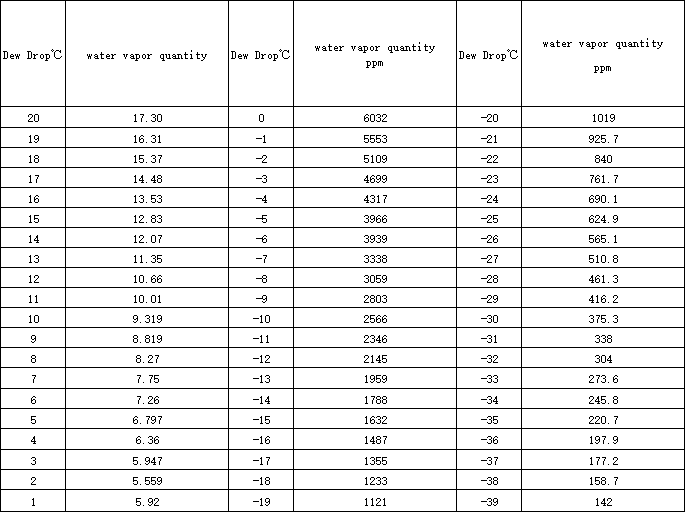How to find the right size air compressor in China? 2/2
In the previous article, we learned about the three basic elements of air compressor sizing, namely discharge pressure, discharge airflow and power.
In addition to these three elements, the compressor working environment of the altitude, temperature, and humidity, as well as the pressure dew point on the selection of air compressors have an impact.
1. The effect of altitude on air flow
With the increase in altitude, the air becomes thinner (inlet pressure decreases), and air flow and power consumption will change.
A compressor located at sea level height when the pressure ratio is 8, will be moved to an altitude of 3000m, and the pressure ratio will increase to work to 11 ~ 12, the volumetric efficiency will be reduced accordingly.
Wind tools or pneumatic machinery in the selection of compressors, to achieve the same performance with the height of the sea level, the requirements of different altitudes to choose the appropriate volume flow and compression ratio of the compressor.
2.TemperatureTemperature is a physical quantity that indicates the degree of heat and cold of an object, and is a statistical average of the thermal movement of the molecules of matter.
(1) thermodynamic temperature to the material molecules completely stop moving (absolute zero) for the starting point of the temperature, the unit symbol for K (Kelvin). Kelvin temperature and Celsius temperature is only the difference between the starting point of the calculation of temperature is different,
that is, the zero point is different from each other, a difference of a constant of 273.15 that is,
the absolute zero 0K = -273.15 ℃ melting point of ice 0 ℃ = 273.15K.
(2) Celsius temperature at standard atmospheric pressure, the temperature of a pure ice-water mixture is defined as 0 degrees Celsius, the boiling point of water is defined as 100 degrees Celsius, there are 100 equal parts in the middle, each equal part of 1 degree Celsius, recorded as “1 ℃”.
(3) Fahrenheit temperature at standard atmospheric pressure, the melting point of ice is 32 °F, the boiling point of water is 212 T, there are 180 equal parts in the middle, each equal part is 1 degree Fahrenheit, recorded as “1 under”.
The conversion relationship between the 3 temperature units is.
T(K)=t(°C)+273.15
t(℉)=32+1.8t(°C)
t(℃)=7-273.15=[t(F)-32]/1.8

Compressor exhaust temperature is the temperature of its final stage-discharge gas, multi-stage compressor discharge gas temperature
known as the exhaust temperature of the stage.
Discharge temperature is an important indicator of the safety of the compressor, due to the nature of the gas being compressed requirements, the requirements of the lubricating oil in the working chamber and the requirements of the sealing material, etc., on the exhaust temperature (including).
exhaust temperature (including all levels of exhaust temperature) are limited (see Table 2-2), is the compressor control system essential monitoring point.
Monitoring point.

3.Humidity
The physical quantity that indicates the degree of dryness of air is called humidity.
The degree of humidity of the air refers to the water vapor content and the degree of wetness of the air, usually expressed in terms of relative humidity. Relative humidity is the ratio of the water vapor pressure in the air to the saturated water vapor pressure at the same temperature, ranging from 0% to 100%.
The higher the relative humidity, the more humid the air; the lower the relative humidity, the drier the air.
Physical quantities that indicate how humid the air is include:
Absolute humidity: the mass of water vapor contained in a unit volume of air.
Relative humidity: the ratio of the water vapor pressure in the air to the saturated water vapor pressure at the same temperature, usually expressed as a percentage.
Dew point temperature: The temperature at which air is cooled to saturation.
Relative humidity and moisture content are frequently used in compressed air purification systems. Relative humidity is more
Often used to reflect the moisture absorption capacity of wet air, the smaller the value, the drier the air, the stronger the ability to absorb water, and vice versa.
The smaller the value, the drier the air, the stronger the water absorption capacity, and the opposite, the more humid the air, the weaker the water absorption capacity.
The moisture absorption capacity of wet air is also related to the temperature, the temperature of wet air increases, the saturation pressure increases accordingly.
Larger, so then the water vapor content remains unchanged, but the relative humidity will fall, that is, the moisture absorption capacity of wet air increases.

4. Pressure dew point
The dew point is a certain pressure, the water vapor content in the air to reach saturation temperature queue value. When the air humidity is high, the dew point temperature will decrease: Conversely, when the air humidity is low, the dew point temperature will increase. Therefore, the change of dew point temperature is closely related to the air humidity.
There are detailed functions, usually, air compressor inhalation is not saturated air, its atmospheric dew point temperature is higher than the ambient temperature, so it will not condense condensation out of water.
But the air containing water gas can only accommodate a certain amount of water (air molecules can be compressed and water molecules will not be compressed), the compressor in the compression of the gas reduces the volume of the gas, there is not enough air to accommodate all the water, so more water analyzed to become condensate, the larger the compression ratio, the smaller the volume of air available to accommodate the water, the easier it is to precipitate condensate.
This is the reason why the pressure dew point temperature rises as the pressure rises.
Usually, we need to change the pressure dew drop ℃ into dew drop ℃ at atmospheric pressure to calculate the volume of water molecules in the air.The conversion relationship can be referenced from the following table.

These are some of the basic knowledge and concepts about air compressors. You need to detail in addition to the working pressure, exhaust volume, and power information. You also need to know the ambient temperature, altitude, and other additional information about the compressor to facilitate the selection of the correct model.
DREAM Air Compressor one leading Chinese air compressor manufacturer with 14+ years of professional experience, will provide you with technical solutions for different models to provide efficient, clean, and energy-saving use of the program.